Games
Should You Play Ethereum Farming Game ‘Pixels’ If You Don’t Care About Crypto?
Published
3 months agoon
By
adminI’m not a crypto guy. I don’t have a wallet and I haven’t invested in Bitcoin, Ethereum, or any silly meme coins. And while I love video games and have written about them for years, the world of crypto gaming is uncharted territory for me.
As such, Pixels—the Ethereum-based online farming game—is something new for me, though it immediately reminds me of another hugely popular game: Pixels is essentially the charming indie gem Stardew Valley, but with a crypto twist.
I cannot stress how similar this game is, visually and mechanically, to Stardew Valley. I’ve been playing both games in recent weeks to see how much the crypto element changes the game, whether it’s an improvement or detriment to enjoyment—and whether “Web2 gamers” like myself can enjoy Pixels without knowing or handling crypto.
Is Pixels worth playing if you don’t care about crypto? And did it ultimately make me want to engage with this space on a deeper level? Here’s my take.
First steps
Getting started in Pixels is easy enough. Kind of. All you have to do is head to the Pixels site, punch in your email address or phone number, and you’re in. You don’t currently need a crypto wallet to play, though the login screen mentions that a Ronin wallet will soon be needed. That could be a future hurdle for anyone who doesn’t want to touch the tech.
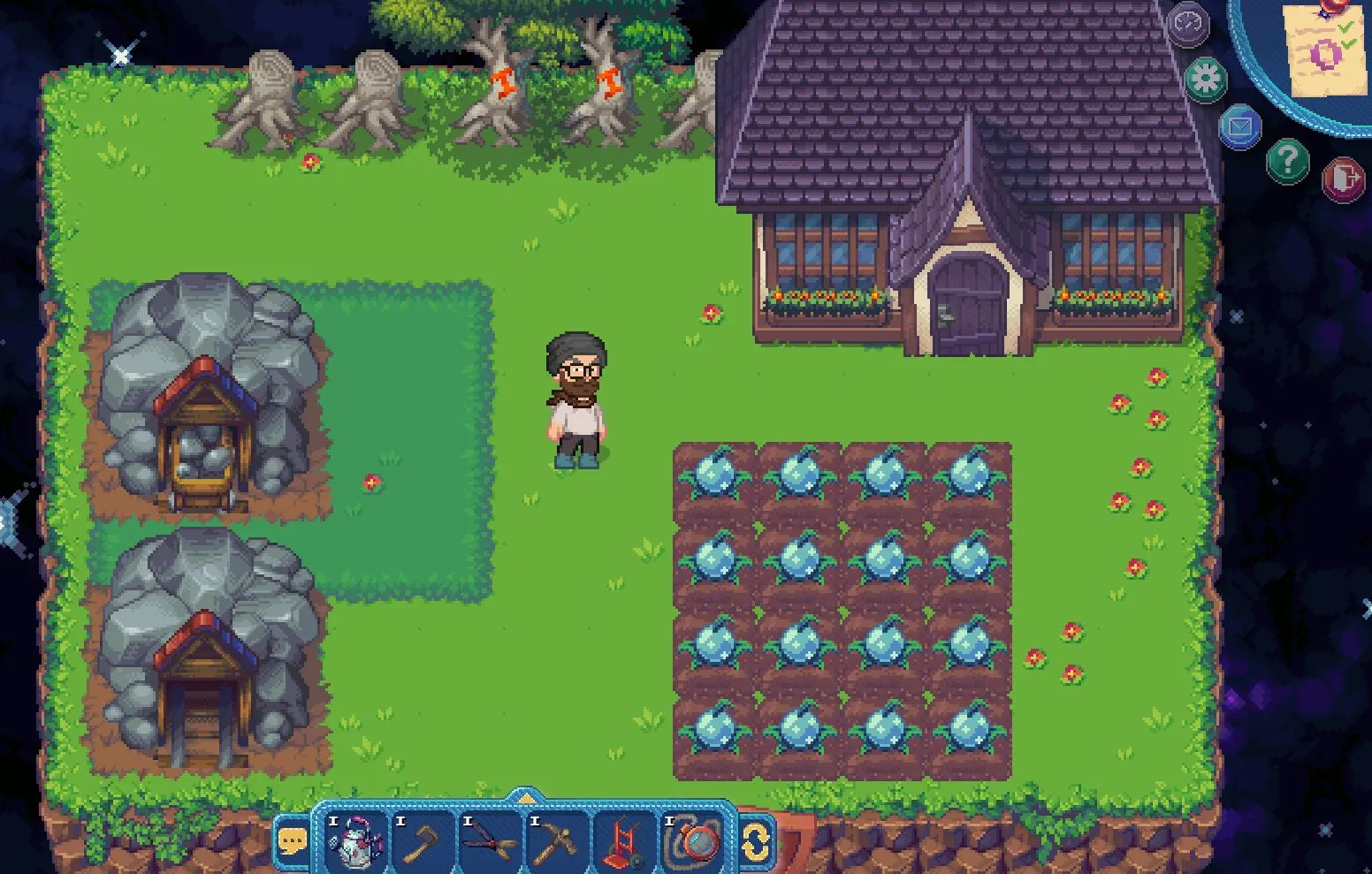
There’s some quick onboarding to the game’s major currencies—popberries, gems, and coins, plus the on-chain PIXEL token on Ethereum that players can earn (and that’s worth real money). Gems are the currency that you can purchase through external means and are used to buy cosmetic items and such. Popberries you’ll grow, and coins you’ll obtain by fulfilling orders.
So how do you fulfill orders? A helpful non-playable character (NPC) guide named Barney walks you through using basic tools. When I say that Pixels feels exactly like Stardew Valley, you’ll see what I mean here. Your first suite of tools includes a rusty watering can and a basic axe, pickaxe, and shears—nearly the same set of starting tools as in Stardew, and even the naming of the rusty watering can is the same. There’s no hoe, though, because you have to use coins to purchase new soil squares.
Your small plot of land comes with a house, six soil squares, four trees, and a mine. The mine isn’t something you go into—you just send a cart in there, and a random number generator determines whether you get one of a number of ores, rocks, and the like.
A cold place
In some ways, Pixels offers some nice convenience elements compared to Stardew. Where Stardew wants you to walk between different places, you can move between your farm and the city in Pixels with just a couple of quick clicks. The game also doesn’t seem as concerned about you being close to your trees, mine, or plots to interact with them. With that said, they’re much larger than Stardew—but you can click on stuff really fast if you want.
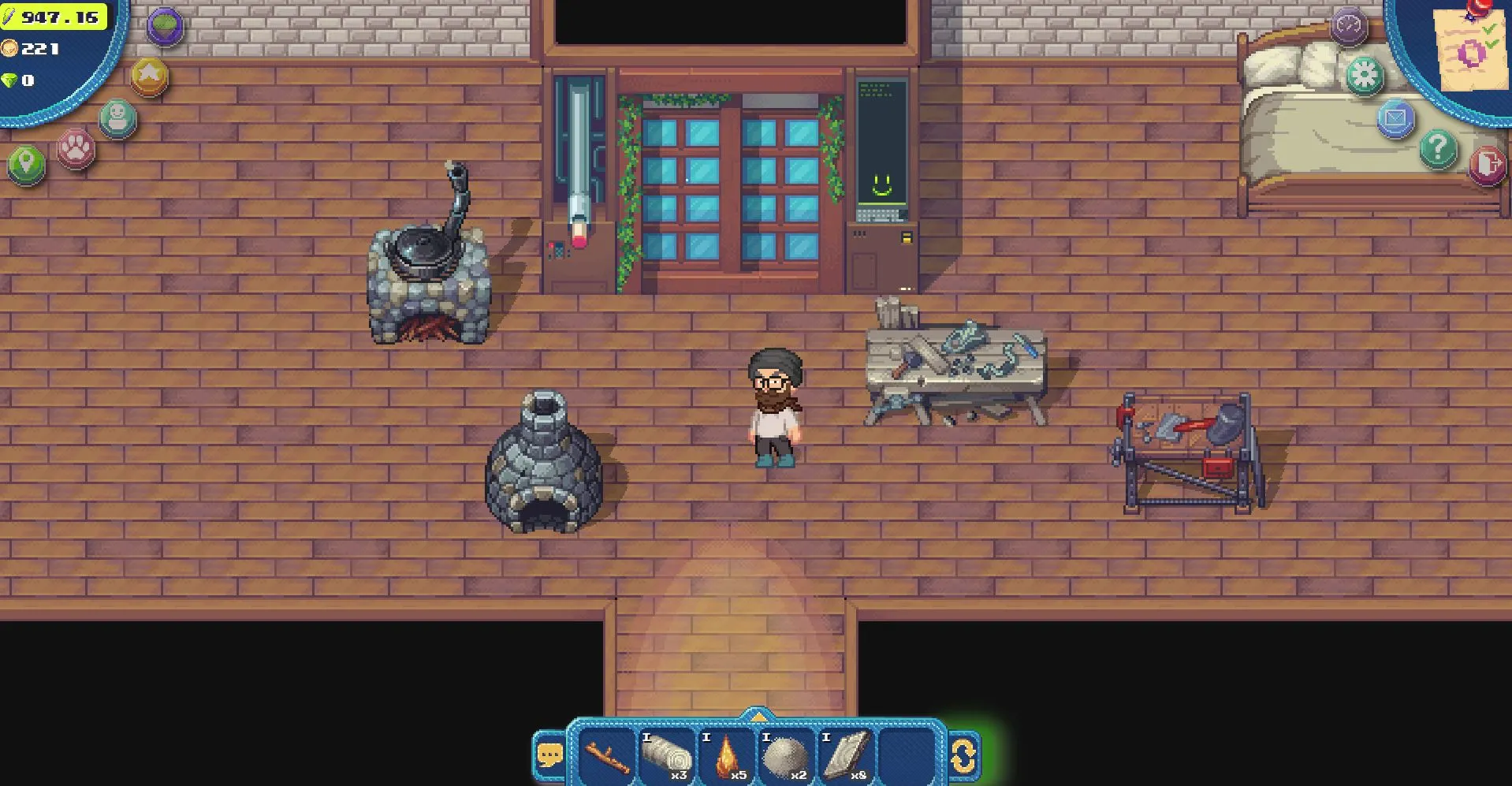
But the similarities to Stardew are largely superficial. Yes, you’re farming, logging, and mining, and you level those skills up to perform them more quickly or to build more complex items. You also have an energy bar to determine how much stuff you can do in a given sitting.
But you aren’t building relationships with other characters—one of Stardew Valley’s most rewarding aspects. There’s also no passage of time. Stardew Valley has a day and night cycle, as well as seasons that change the look of the game significantly. After a long spelunking adventure in the game’s cave system, you’ll come out to near total darkness. The relationships and passage of time help to make Stardew Valley feel like a real, warm place.
Pixels, in comparison, feels like a liminal space—but not in the cool, spooky way. The few NPCs that exist are purely functional, standing in for menus for acts like shopping or trading gems. They have no personality. Since you buy things through their benches rather than through the NPCs directly, it also feels like there’s no reason for them to be there.
And with no passage of time, it’s always daytime. You never sleep, and the lack of seasons make the game feel endless. How long have I been here? A week? A year? Where Stardew Valley is a place I’d love to hang out, Pixels feels like a weird, creepy dream.
Crypto rules everything around me
When you get down to it, Pixels is mostly a series of timers. Before long, you’ll have a stoneworking oven, a woodworking bench, and a metalworking bench in your house. But mostly what you’re doing is just clicking on them to produce one thing at a time, on a pretty lengthy timer. The list of items is small to start with, and grows slowly.
This is also an online-only game. It’s available only through a browser, and when you head to town, you’ll find swarms of other players zipping around in bizarre outfits they’ve purchased with their gems—or displaying their owned NFT avatars.
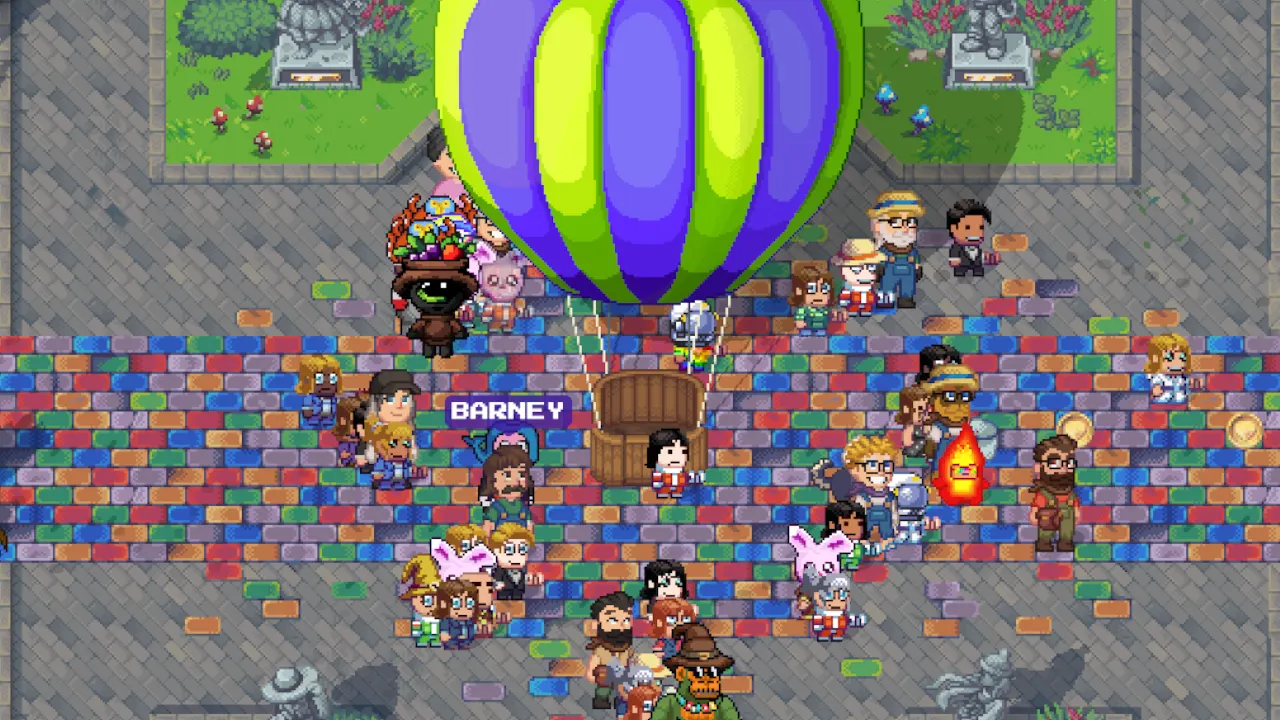
Anything resembling fun and progression is locked behind gems. Doing enough in the game to make gems in Pixels at the beginning is, as far as I can tell, impossible. It’ll be dozens of hours before you can even consider the idea.
Interacting with currencies feels like the primary goal of Pixels, and gameplay comes second to that aim. If you want to interact with the game, it’s all but necessary that you interact with the crypto/NFT elements of it. Simply put, Stardew Valley offers a similar experience mechanically, but is much more feature-rich and much more rewarding in every way.
Because I’m not particularly interested in cryptocurrency, there’s not really a reason for me to continue to play Pixels. Stardew Valley does everything Pixels does, but adds warmth to it. It’s about building a community at least as much as it is about farming fruits and vegetables, making this mechanical imitation feel hollow in its current form.
Pixels really feels about how I expected a crypto game to feel—empty and repetitive. And it’s not that crypto games can’t be good! There’s certainly room out there for someone to crack the question of what gameplay loop would work in a game where you play to earn real-world cryptocurrency. But the derivative Pixels, no matter how charming it may look, isn’t it.
Edited by Andrew Hayward
Editor’s note: For another take on Pixels from someone who is already immersed in the world of crypto, be sure to read our original review from February 2024.
GG Newsletter
Get the latest web3 gaming news, hear directly from gaming studios and influencers covering the space, and receive power-ups from our partners.
Source link
You may like


Bitcoin (BTC) Kimchi Premium Spikes as South Korea’s Political Turmoil Weighs on Won


Undervalued altcoins to keep an eye on


Is BitStamp Building Exchange on XRP Ledger?
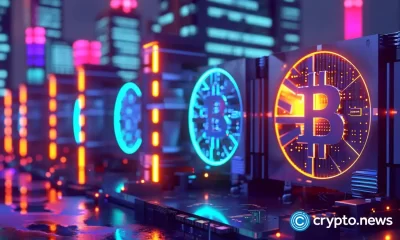

BCH Miner helps users make $5,000 a day


Moo Deng Crypto Climbs 70% On Buterin’s Backing


Is Bitcoin Price Crash To $60K Imminent Before Donald Trump Inauguration?
Games
The Best Games of 2024 That You Can Snag for Under $25
Published
13 hours agoon
December 27, 2024By
admin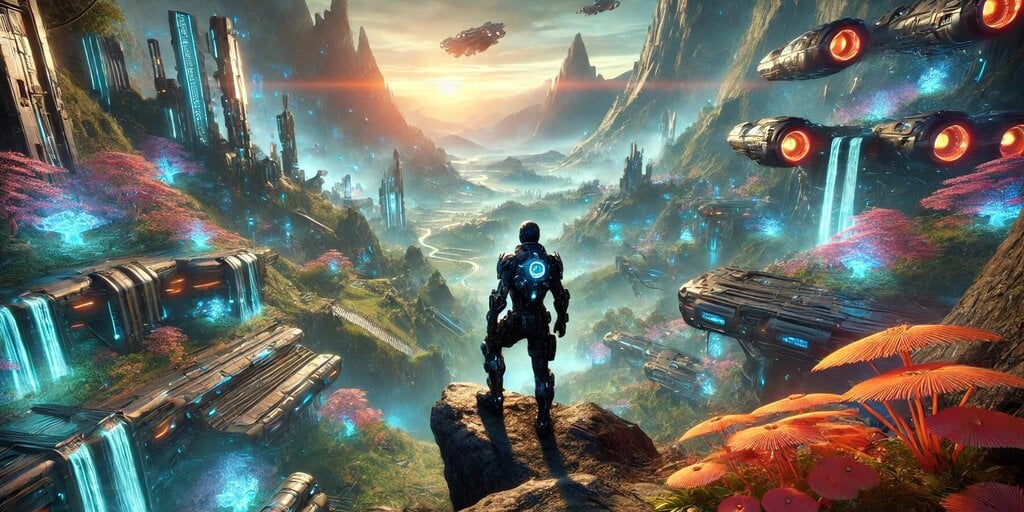
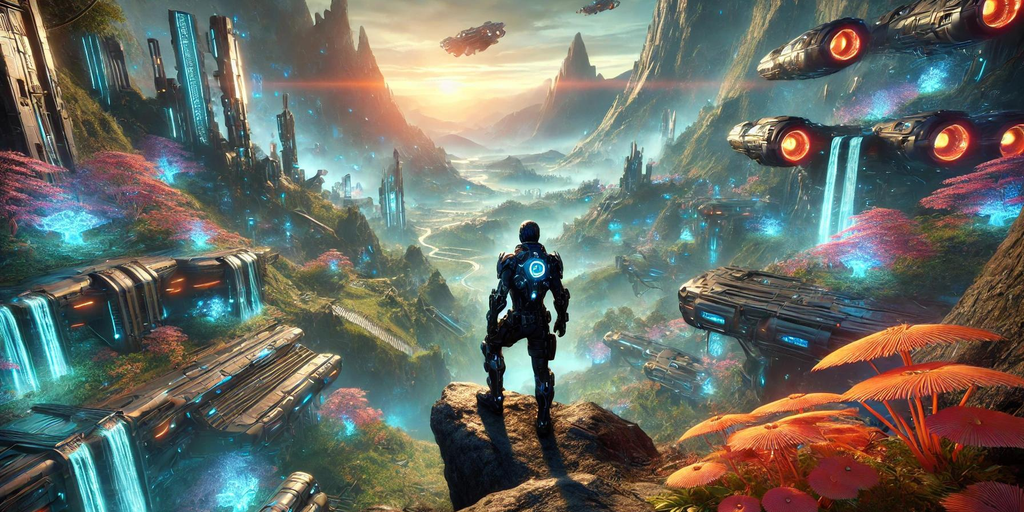
While many of the most popular games this year demand spaceship-level tech or are out of reach due to costs, you don’t need a GeForce RTX 4090 to play a handful of this year’s memorable experiences via the Steam store.
For once, we’re not suggesting you throw your wallet into a fire as a sacrifice to the Mighty Retail Lords.
In fact, you could get every title on this list for the cost of a little more than two full-price retail games. Let’s look at the best games of 2024 under $25.
Editor’s note: All of the games on this list are traditional “Web2” games without crypto or blockchain integrations. But you might enjoy ’em anyway!
Echo Point Nova ($25)
Platform: PC
Echo Point Nova is simultaneously the highest-priced game on this list and the least memorable name. However, that’s where the negatives end.
Tasked with fighting a powerful mercenary force taking over the planet you’ve landed on, the world ahead of you is enormous. Luckily, you’re blessed with some incredible traversal options.
Before long, you’ll be leaping, surfing, and grappling all over this sci-fi world, taking down massive ships and overwhelming enemy forces. Echo Point Nova feels like a PC game from a different time—it’s simple, straightforward, and a whole lot of fun.
Rise of the Golden Idol ($20)
Platforms: Android, iOS, PC, Mac, Switch, PlayStation 5/4, Xbox Series X/S + One
Something happened here. You have all of the clues right in front of you. You just have to make sense of the situation and put them together to find the right answer.
That’s the basic premise of the Golden Idol games. We’d generally recommend that you play Case of the Golden Idol (currently $18 on Steam) first, but it’s not necessary to enjoy solving the brain-teasing mysteries in The Rise of the Golden Idol.
Each level presents you with some kind of chaotic situation or its aftermath. As you click around, you’ll pick up different words, which you can then use in your handy-dandy notebook to fill in the blanks.
These games feature unique graphics and compelling mysteries that can keep any wannabe Sherlock Holmes hooked.
Tactical Breach Wizards ($20)
Platform: PC
We’re going to invent a new genre for this one: The Breach-like.
In this turn-based tactics game, you control a team of renegade tactical wizards. You’ll uncover a conspiracy using their various abilities, alone or in combination.
The gameplay reminds us of Into the Breach while still doing its own thing, and it might just be the best-written game of the year.
Dread Delusion ($20)
Platform: PC
You don’t need photoreal graphics to make a killer open-world RPG, and Dread Delusion is proof.
Borrowing a page or two from games like The Elder Scrolls III: Morrowind and Dark Souls, Dread Delusion sets you off exploring a strange, new world with a 15-30 hour campaign and a truly special sense of discovery.
If you long for the good ol’ days of PC gaming or want to get a feel for what it might’ve been like to play a game like Morrowind when it was new, Dread Delusion is a great place to start.
1000xResist ($15)
Platforms: PC, Switch
1000xRESIST is a narrative-heavy game with a heavy narrative.
You play as Watcher, whose job it is to walk her sisters through the distant memories of the Allmother. As she explores those memories, she begins to see the state of the alien-occupied world they live in differently.
The game has sharp writing, and the graphics are minimalist but visually striking. It combines light platforming and time travel with dialogue to tell a thoughtful and compelling story.
Fields of Mistria ($14)
So you’ve played 400 hours of Stardew Valley and want something new. Fields of Mistria is in early access, but it already offers lots to do and is garnering strong word of mouth from both critics and fans.
This farm-life-sim game gives you a plot of land to tend, a town to restore, and 12 potential characters to romance.
The pace of development on this early access title has us convinced that the planned features will see the light of day in good time.
Balatro ($15)
Platforms: Android, iOS, Mac, Switch, PS5/PS4, Xbox Series X/S + One
If you’re reading an article like this, then there’s a fair chance you already have Balatro. This roguelike deck-building poker-solitaire hybrid is the belle of the indie ball this year.
You start with a deck of 52 cards and work from there, adding joker cards that modify your deck.
A joker might give you $1 in spending money after each round, or provide a 5x multiplier once you’ve discarded enough cards. Many of the jokers are weird, but can become game-changers under the right circumstances.
This is the perfect example of a “just one more round, please” game, and you might accidentally lose sleep.
Mouthwashing ($13)
Platform: PC
Mouthwashing might sound like a weird dental hygiene simulator, but it is, in fact, a short and intense psychological horror game… much like a visit to the dentist.
We don’t usually just grab the official description for a game, but we don’t want to spoil this one either.
“The five crew members of the Tulpar are stranded in the empty reaches of space, shrouded in perpetual sunset. God is not watching.”
At $13 and just a few hours of gameplay, this one is enough to fill up an evening of creepy gameplay without overstaying its welcome or dinging your wallet.
Cabin Factory ($3)
Platform: PC
Set your expectations properly: This is a $3 game when it’s not on sale.
Cabin Factory has you employed by an unknown company that manufactures haunted cabins for use in places like theme parks.
Your job is to inspect each one for anomalies, like a twitching body or getting locked in a basement with a mirror that shows you as a little girl.
It has some rad vibes and good scares, and looks surprisingly good for the price. It’s a great game if you stream or you’re after a spooky evening with your friends on Discord.
Edited by Sebastian Sinclair
GG Newsletter
Get the latest web3 gaming news, hear directly from gaming studios and influencers covering the space, and receive power-ups from our partners.
Source link
Games
7 Massive Games From 2024 Worth Playing Over the Holiday Break
Published
1 day agoon
December 26, 2024By
admin

For many of us, the upcoming holiday break means having a lot of time on our hands.
We’re at home with the family, off work or school, and we can only stand so many Christmas movies, so many cookies, and so much time with our beloved family members.
Instead of looking for a million little ways to distract ourselves or doomscrolling on our phones, why not look for a single game to invest time in?
The following games will each provide you with dozens of hours of fun, and the only regret you’ll come away with is that you spent less time with them.
Editor’s note: All of the games on this list are traditional “Web2” games without crypto or blockchain integrations. But you might enjoy ’em anyway!
Indiana Jones and the Great Circle
Platforms: PC, Xbox Series X/S
Have you ever watched one of the classic “Indiana Jones” movies and wondered what it would be like to step into his shoes, put on his hat and leather jacket, and dive into some bone-filled catacombs?
If so, then Indiana Jones and the Great Circle is your game.
This game gives you tons of mysteries and places to explore, and—going against the worries of the critical community ahead of release—it’s anything but a rehashing of Uncharted, now with Indiana Jones characters.
As Indy, you’ll rock clever disguises and blend into the crowd, using your social stealth knack to crack mysteries.
Dive underground, and it’s all classic Indy vibes—hat, whip, and wit—tackling puzzles, outsmarting fascist goons, and delivering knockout blows with whatever melee weapon you can scrounge up. Guns? Strictly a last resort.
It feels like a genuinely authentic Indiana Jones adventure that lets you role-play as the titular character in just about every way you can think of.
Like a Dragon: Infinite Wealth
Platforms: PC, PlayStation 5, Xbox Series X/S
The Like a Dragon series started in the early 2000s (when it was originally called Yakuza) and has 10 games in its canon storyline. But you can totally start with Infinite Wealth, the most recent mainline game in the series.
As Ichiban Kasuga, you’ve just been fired from a job and are heading to Hawaii to find your long-lost mother. What sounds like a paradise vacation, however, quickly turns into a tank of barracudas, sharks, and more.
You’ll go on an epic adventure, make awesome friends, beat up Danny Trejo, and save Hawaii—stopping along the way to deliver pizzas, fill up your social network, and sing karaoke.
Infinite Wealth is equal parts heartfelt, deadly serious, and goofy fun, and it all works together.
Dragon’s Dogma 2
Platforms: PC, PS5, Xbox Series X/S
Dragon’s Dogma 2 is a weird game, and even its developers are probably surprised that the original got a sequel.
This game puts you on a quest to retake your rightful place on the throne, but it truly is the journey, not the destination. Journeys can be long and arduous, and you must prepare for them.
You can’t take everything with you, but the more damage you take, the less you can heal back. You’ll choose a class for yourself and your AI-controlled companion and borrow a couple from other players.
Dragon’s Dogma is a strange, beautiful game, and there’s nothing else quite like it.
Astro Bot
Platform: PlayStation 5
Role-playing games are fun, but they’re a big lift. Sometimes, you just want to have some chill fun. Astro Bot is perhaps the closest that anyone has ever come to replicating the simple joy of a Mario game outside of Nintendo.
As Astro Bot, you’ll visit themed planets, rescuing other bots inspired by a startling array of PlayStation franchises, both new and ancient.
This game sports an incredible amount of variety; in one level you might get some grabby monkey hands to climb and fight with. In another scenario, you transform into a sponge that absorbs and releases water as it interacts with the environment.
The game is packed with delightful surprises at every turn, features outstanding music, and delivers a particularly satisfying experience for older gamers with fond memories of PlayStation. It offers a complete and engaging experience for anyone capable of holding a controller.
Balatro
Platforms: Switch, PS5/PS4, Xbox Series X/S, Xbox One, iOS, Android, PC, Mac
You can play Balatro for just half an hour if you have the willpower of a mighty warrior. Or you can play it all day and night, forgetting to shower and eat as you try just one more round.
Balatro, developed by just one person, combines poker, solitaire, and roguelike game mechanics.
Each playthrough starts with 52 cards, and you’ll build your deck, adding special cards—and most importantly, unique jokers that modify your deck, multiplying what might’ve been a few hundred points into tens of millions with the right combinations.
When you score high enough, your score meter sets on fire. That’s really all we need to say.
Metaphor: ReFantazio
Platforms: PS5/PS4, Xbox Series X/S, PC
Metaphor: ReFantazio might be a strange title, but stick with it.
This is the new series from the developer of the beloved Persona series. It carries over many elements of those games into a brand new fantasy world—an opportunity to get in on the ground floor.
Metaphor tells a thoughtful story about democracy and religion, features brilliant turn-based gameplay, and iterates on the time mechanics from Persona to keep them familiar and refreshing.
It has some of the most memorable music of the year and retains the studio’s high standard of visual design in both the characters and user interface alike. Extra points for the enemies inspired by Hieronymus Bosch’s “Garden of Earthly Delights.”
Satisfactory
Platforms: PC (consoles soon)
Out here in the real world, we should strive to leave a minimal environmental impact on the world around us. In video games, though, why not do the opposite?
Exploit the living daylights out of a beautiful alien planet, turning it from an unspoiled natural world into a sprawling complex of machines belching out smoke and creating a ruckus, all for the sake of profit… of the company you work for.
That’s Satisfactory.
FICSIT, Inc. drops you on an empty planet, and you must build a space elevator and orbital space station. By the time you’re done, you’ll have nuclear power plants, multiple train lines, and hundreds of machines spread across countless installations.
You can play this one in multiplayer if you like, or you can play it alone. You can do lots of math, or you can wing it. You can work hard to make all of your machines aesthetically pleasing, or you can create a gnarly network of noodly conveyor belts. That’s the FICSIT way.
Edited by Sebastian Sinclair
GG Newsletter
Get the latest web3 gaming news, hear directly from gaming studios and influencers covering the space, and receive power-ups from our partners.
Source link
Games
7 Best Free Games to Play on Xbox Series X and S
Published
2 months agoon
October 19, 2024By
admin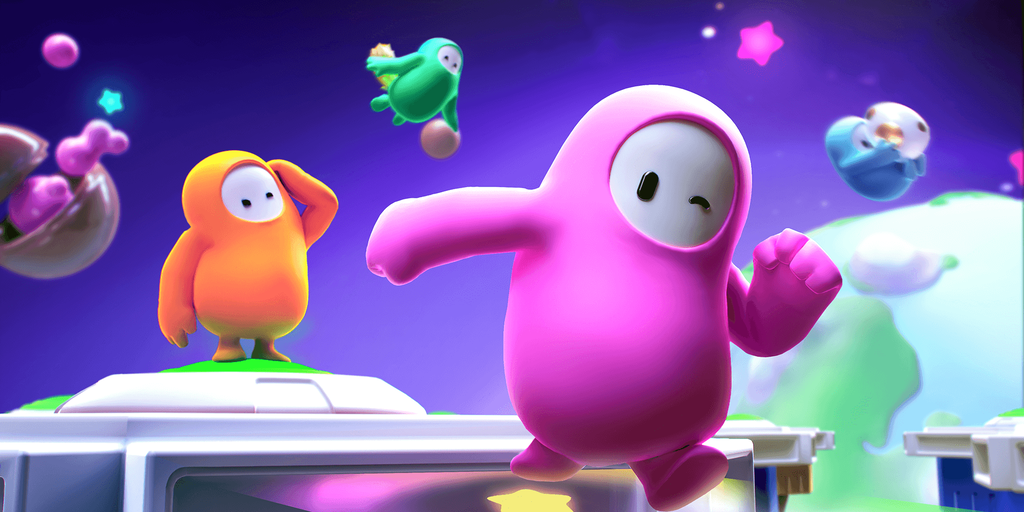
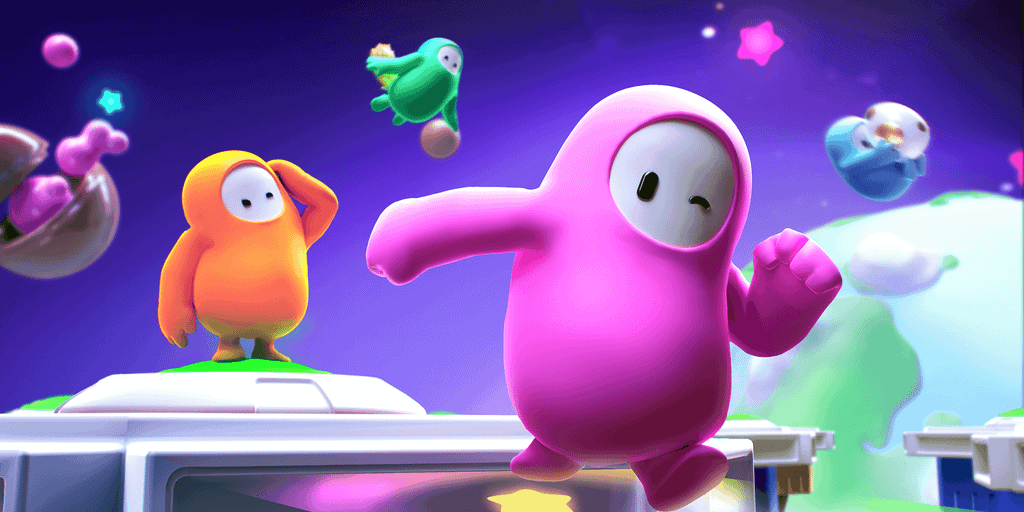
Microsoft has lowered the bar to gain access to lots of games on Xbox with an Xbox Game Pass—for just $10 a month, users can pick up a whole bunch.
Still, you’re looking at $120 a year minimum to get gaming on a system that probably cost you $500.
Even if great games are worth the money, our budgets only stretch so far. You can get games like Forza Horizon 5 or Starfield that will last hundreds of hours, but even then, those may only keep your attention for so long.
That’s where free-to-play games come in. Free-to-play once meant a “short Flash game that you can play in a browser.” Now, the term really just means a game that you can start playing without spending a cent, and there are some serious bangers.
While free-to-play is far from a quality marker, it’s no longer a promise of a subpar title either. There are free-to-play games that can roll with the best of them.
Here are our favorite free games on Xbox Series X and S right now.
(Editor’s note: All of the games on this list are traditional “Web2” games with no crypto elements. However, if you’re looking for a compelling crypto game on Xbox Series X/S, Off the Grid just launched in early access and could be a future contender for this list.)
Call of Duty: Warzone 2.0
We offer up a few different ways to fire video game guns at friends and strangers, and each has its own appeal. But there’s nothing quite like Call of Duty in terms of tone and feel.
Party up with your friends and live out your Tier 1 Operator fantasies, parachuting into a war-torn city to battle other soldiers of fortune. It’s like paintball, except all the paint is red, and you don’t leave with a bunch of welts on your back.
Fall Guys
Sometimes, gaming is about winning. Other times, it’s about being a smol bean and pushing your friends off of stuff. That’s what Fall Guys is for. Fall Guys is, in short, a video game version of shows like “Takeshi’s Castle” (aka “MXC”).
You inhabit the body of a bean-shaped character and are tasked with completing different events like keeping out of the water, staying on falling platforms, completing obstacle courses, or keeping the other teams from completing an event before your team can.
Every one of the games is silly slapstick action, thanks in part to how goofy the bean-shaped characters look. If you want to spend money on skins for your bean, you can—but it hardly feels necessary.
The Finals
If you’re an old kid, then you might remember “American Gladiators,” a game show that pits everyday athletes against trained, body-building athletes in a variety of physical events.
The Finals is kind of like that. This online multiplayer FPS is a sort of virtual tournament—hence the name. Teams, usually of three players, drop into the map for an event like Capture the Flag.
Here’s the twist: Almost everything in front of you can be destroyed, up to and including full buildings. Grenades, mines, and the largest of the three character types can all destroy walls, meaning that simply being in another room isn’t the security blanket you’re used to in other shooters.
Fortnite
Fortnite might be a top-tier battle royale shooter, but it’s also a constantly evolving game.
As we write this, you can use Iron Man’s boots or Leatherface’s chainsaw to zip around the map. Before that, we had things like the Omni-Gear from “Attack on Titan” and cyberpunk swords that let you dash around. Weapons filter in and out, and locations evolve. Every once in a while, the map completely changes.
You can play Fortnite alone or with up to four players. You can play it with or without building functionality. There are also countless user-created modes, alongside official things like Fortnite Festival and Rocket Racing.
You can try to resist buying skins, but if you’re having fun with the game, its hard to say no when Epic Games adds a skin of your favorite character to the game, whether it be Jack Skellington, RoboCop, or Marcus Fenix from Gears of War.
Path of Exile
Sure, Diablo IV is on Xbox Game Pass—but you don’t need to pay for the pass to get an authentic action RPG experience. Path of Exile is an isometric, always-online action game in the style of the Diablo series.
While there are ways to spend money, you can finish the campaign without cracking open your wallet. The game also has a monstrous skill tree that will give you practically infinite options if you like tinkering with your character.
The Sims 4
If you don’t want to shoot guns or swing swords, though, The Sims 4 might be your best bet.
As of 2022, The Sims 4 is a free-to-play game available on various consoles and platforms. This base download still offers everything it did at launch. If it hooks you, though, publisher EA has piles and piles of expansions and object packs to let you live out your perfect digital life.
Warframe
If you like deep, detailed game lore but don’t want to spend money, then Warframe is your jam.
This third-person action RPG puts you into a Warframe, which is basically a biomechanical ninja suit. You can dash and jump around to explore, focus on customizing your character, and engage in player-vs-player combat.
Since its release, the game has received massive support from its developer, with updates that have added piles and piles of lore to consume and explore.
Edited by Sebastian Sinclair
GG Newsletter
Get the latest web3 gaming news, hear directly from gaming studios and influencers covering the space, and receive power-ups from our partners.
Source link

Bitcoin (BTC) Kimchi Premium Spikes as South Korea’s Political Turmoil Weighs on Won

Undervalued altcoins to keep an eye on

Is BitStamp Building Exchange on XRP Ledger?

BCH Miner helps users make $5,000 a day

Moo Deng Crypto Climbs 70% On Buterin’s Backing

Is Bitcoin Price Crash To $60K Imminent Before Donald Trump Inauguration?

OKX Launches Perpetual Futures for GRIFFAIN and ZEREBRO

FTX Co-Founder Ryan Salame Sentence Reduced By 1 Year

Crypto Bull Market Much Closer To End Than We Realize, Warns Analyst Jason Pizzino

Trader who called BTC at $105k forecasts $0.0007 meme token at $1 in 2025

Top 5 Biggest Crypto Hacks of 2024

The Best Games of 2024 That You Can Snag for Under $25

3 altcoins that could skyrocket by new year’s eve

Analyst Predicts XRP Price To Reach $27, Here’s Why

Monkey Please!
182267361726451435

Why Did Trump Change His Mind on Bitcoin?

Top Crypto News Headlines of The Week

New U.S. president must bring clarity to crypto regulation, analyst says

Will XRP Price Defend $0.5 Support If SEC Decides to Appeal?

Ethereum, Solana touch key levels as Bitcoin spikes

Bitcoin Open-Source Development Takes The Stage In Nashville

Bitcoin 20% Surge In 3 Weeks Teases Record-Breaking Potential

Ethereum Crash A Buying Opportunity? This Whale Thinks So

Shiba Inu Price Slips 4% as 3500% Burn Rate Surge Fails to Halt Correction

Washington financial watchdog warns of scam involving fake crypto ‘professors’

‘Hamster Kombat’ Airdrop Delayed as Pre-Market Trading for Telegram Game Expands

Citigroup Executive Steps Down To Explore Crypto
Mostbet Güvenilir Mi – Casino Bonus 2024

NoOnes Bitcoin Philosophy: Everyone Eats
Trending

 3 months ago
3 months ago182267361726451435

 Donald Trump5 months ago
Donald Trump5 months agoWhy Did Trump Change His Mind on Bitcoin?

 24/7 Cryptocurrency News4 months ago
24/7 Cryptocurrency News4 months agoTop Crypto News Headlines of The Week

 News4 months ago
News4 months agoNew U.S. president must bring clarity to crypto regulation, analyst says

 Price analysis5 months ago
Price analysis5 months agoWill XRP Price Defend $0.5 Support If SEC Decides to Appeal?

 Bitcoin5 months ago
Bitcoin5 months agoEthereum, Solana touch key levels as Bitcoin spikes

 Opinion5 months ago
Opinion5 months agoBitcoin Open-Source Development Takes The Stage In Nashville

 Bitcoin5 months ago
Bitcoin5 months agoBitcoin 20% Surge In 3 Weeks Teases Record-Breaking Potential


